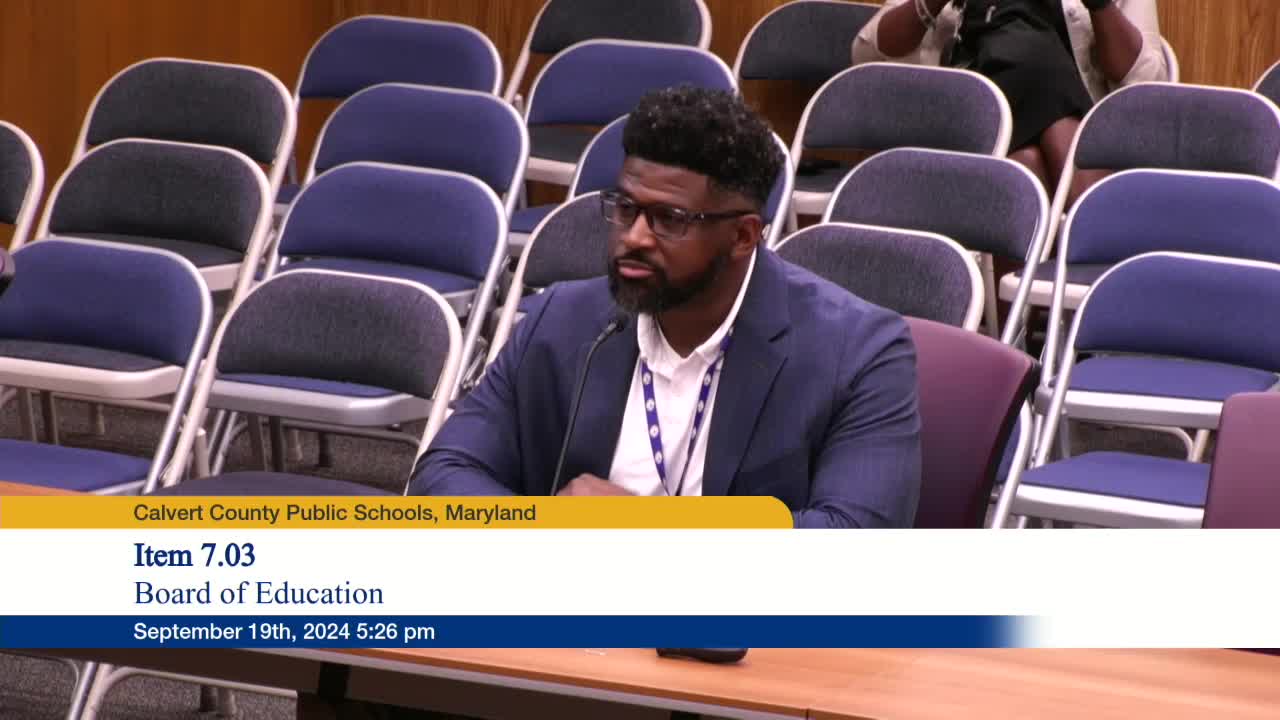School implements high-tech sensors to combat vaping crisis
September 19, 2024 | Calvert County Public Schools, School Boards, Maryland
This article was created by AI summarizing key points discussed. AI makes mistakes, so for full details and context, please refer to the video of the full meeting. Please report any errors so we can fix them. Report an error »

In a recent government meeting, officials discussed the implementation and effectiveness of a pilot program aimed at combating vaping in schools. The program involved the installation of vape detection sensors in restrooms at Calvert High School, which have since been relocated to six middle schools to enhance preventative measures against vaping among younger students.
The sensors, which alert designated staff via email when activated, are designed to monitor not only vaping but also other disruptive behaviors in restrooms. During the pilot, it was noted that while the sensors functioned effectively, there were instances of tampering by students. This raised concerns about the visibility and accessibility of the devices, which hang from restroom ceilings.
Officials emphasized the importance of enforcing existing policies prohibiting vape devices on school grounds. While it is not illegal for students to possess non-nicotine vape devices, school authorities reiterated that such items are not permitted in schools. Teachers are advised to report any sightings of vape devices to administration rather than confiscate them directly.
The discussion also highlighted the need for a comprehensive strategy to address the ongoing issue of vaping in schools, particularly given the feedback from parents and staff regarding its prevalence. Officials acknowledged that despite educational efforts about the vape policy, incidents continue to occur, particularly in restrooms.
To enhance response capabilities, the meeting outlined that when a sensor is triggered, an alert is sent to school administrators and safety advocates, who can then review camera footage to identify students involved. This system aims to improve accountability and deter vaping activities in school facilities.
Overall, the meeting underscored a commitment to tackling vaping among students through technology, policy enforcement, and ongoing education, with a focus on creating a safer school environment.
The sensors, which alert designated staff via email when activated, are designed to monitor not only vaping but also other disruptive behaviors in restrooms. During the pilot, it was noted that while the sensors functioned effectively, there were instances of tampering by students. This raised concerns about the visibility and accessibility of the devices, which hang from restroom ceilings.
Officials emphasized the importance of enforcing existing policies prohibiting vape devices on school grounds. While it is not illegal for students to possess non-nicotine vape devices, school authorities reiterated that such items are not permitted in schools. Teachers are advised to report any sightings of vape devices to administration rather than confiscate them directly.
The discussion also highlighted the need for a comprehensive strategy to address the ongoing issue of vaping in schools, particularly given the feedback from parents and staff regarding its prevalence. Officials acknowledged that despite educational efforts about the vape policy, incidents continue to occur, particularly in restrooms.
To enhance response capabilities, the meeting outlined that when a sensor is triggered, an alert is sent to school administrators and safety advocates, who can then review camera footage to identify students involved. This system aims to improve accountability and deter vaping activities in school facilities.
Overall, the meeting underscored a commitment to tackling vaping among students through technology, policy enforcement, and ongoing education, with a focus on creating a safer school environment.
View full meeting
This article is based on a recent meeting—watch the full video and explore the complete transcript for deeper insights into the discussion.
View full meeting
